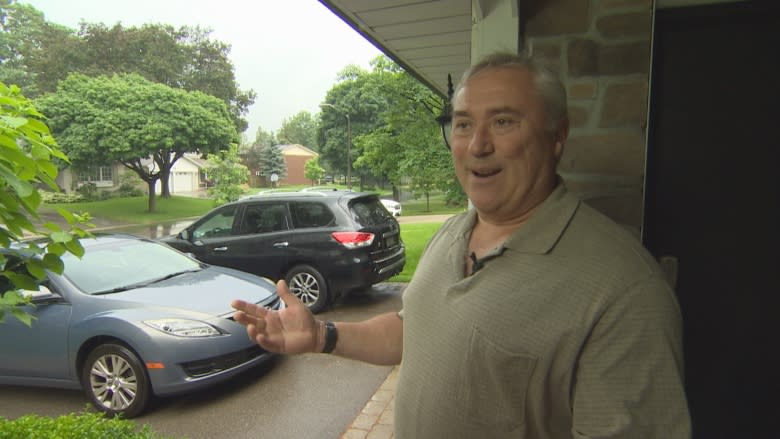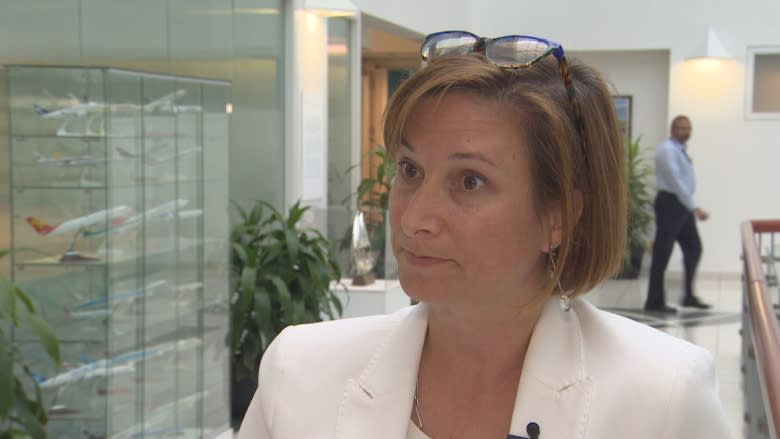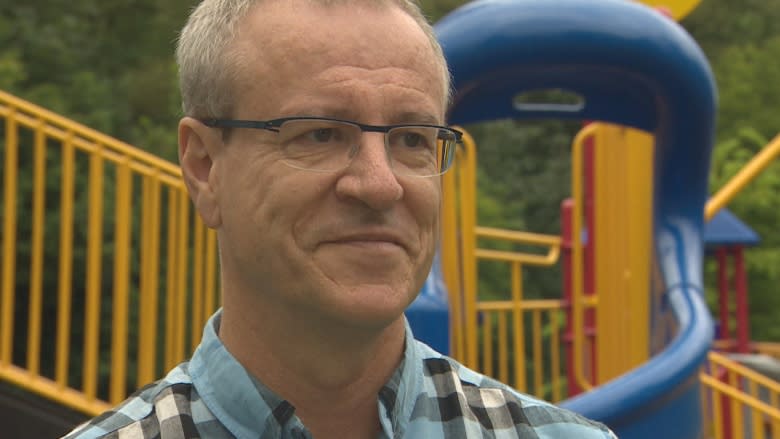Frustrated by noise, residents near Pearson fear future as airport grows
Residents south of Pearson airport are not happy with the amount of loud, low-flying planes that fly over their homes. And as the Greater Toronto Airport Authority develops its "Master Plan" to double its capacity over the next 20 years, residents say they haven't forgotten the last-minute awareness campaign for last spring's runway resurfacing that sent even more planes overhead.
About 400 people have joined a Facebook group called "Neighbours Against the Airplane Noise." All of them have dug in their heels at public consultations with the GTAA about the airport's growth. Every ten years, the GTAA must submit what's called a "Master Plan" to Transport Canada that forecasts both the airport's growth and the impact of that growth.
"By about 2037, 2040 the regional demand will probably be around 80 million passengers," said Hillary Marshall, vice president of stakeholder relations and communications for the GTAA.
Overtop a rendering of Pearson's current layout of terminals and runways, Marshall pointed out the seemingly small physical modifications that the agency would need to make to allow for the near doubling of passengers the GTAA forecasts for the airport.
"Planes are getting larger so they're carrying more people," Marshall said. Because of this, the land-locked airport won't need a large physical expansion to accommodate passenger growth, she said.
Many residents in Etobicoke's Markland Woods area are skeptical of this. People like Peter Bayrachny feel like they were blindsided by the GTAA after receiving little notice about the runway resurfacing that caused planes to divert onto a flight path above their homes.
"You can't have a conversation in the backyard," said Bayrachny, who has lived near Pearson's north-south runway for 23 years.
He fears the expansion will bring more planes, more noise and said after this spring, he won't be able to take it anymore. The GTAA's suggestion to distribute air traffic across all runways will not make things better in his neck of the woods.
"It's certain terminology that they call 'noise sharing' and they're starting to market that as a concept," said Bayrachny.
Right now, Markland Woods sees six to seven per cent of air traffic because it is a residential area and is underneath planes on their final approach to the runways. Bayrachny fears spreading the noise, or as the GTAA calls it, "runway alternation," could increase the planes in his path by 20 to 30 per cent.
"It would just be horrendous," he said.
Local MP not happy with public consultations
Borys Wrzesnewskyj, the MP for Etobicoke-Centre, has hosted and attended many consultations between airport stakeholders, the GTAA and the public.
"My job as an elected representative is to make sure that my community is aware of anything that impacts on their quality of life," he said. So far he feels the GTAA is on its trajectory of growth whether his constituents are on board or not.
"If you're a corporate citizen that has a negative impact on people's lives, people's health, people's property values, you can't take the benefit of expanding your business and not have to worry about the costs," he said.
Marshall's counterpoint touts the benefits an airport-turned-mega hub like job creation and tourism and economic boosts. She also states it plainly: "The fact is, the region is growing. The GTA's population is set to double over the next 20 or 30 years," she said. "And this airport is growing with the region."
Wrzesnewskyj said his constituents would like to see an audit of the GTAA's handing of public input gathered throughout its meetings with the public.
Marshall argued that aside from the critics, the GTAA's research shows that most of the GTA is in favour of the airport's growth.




